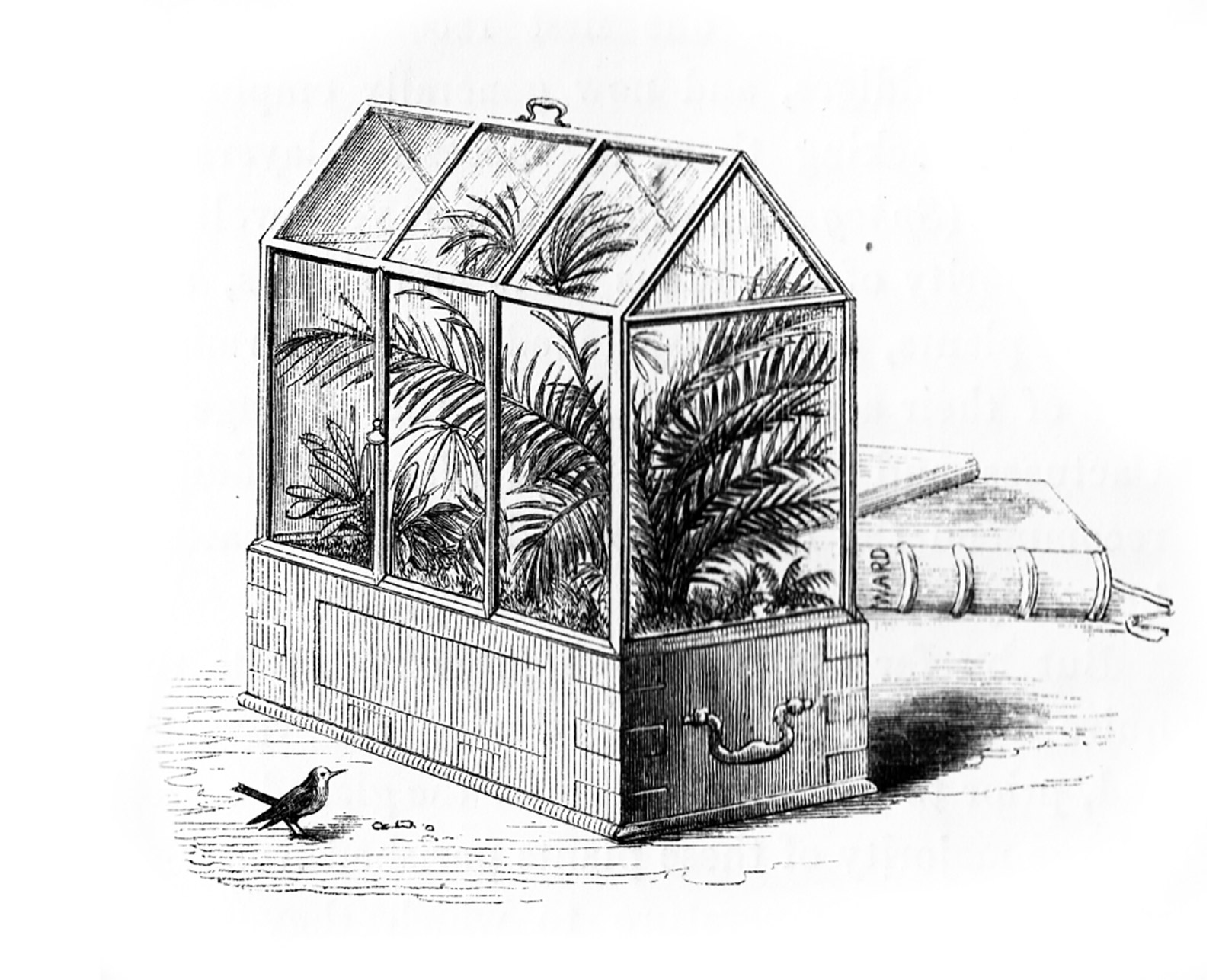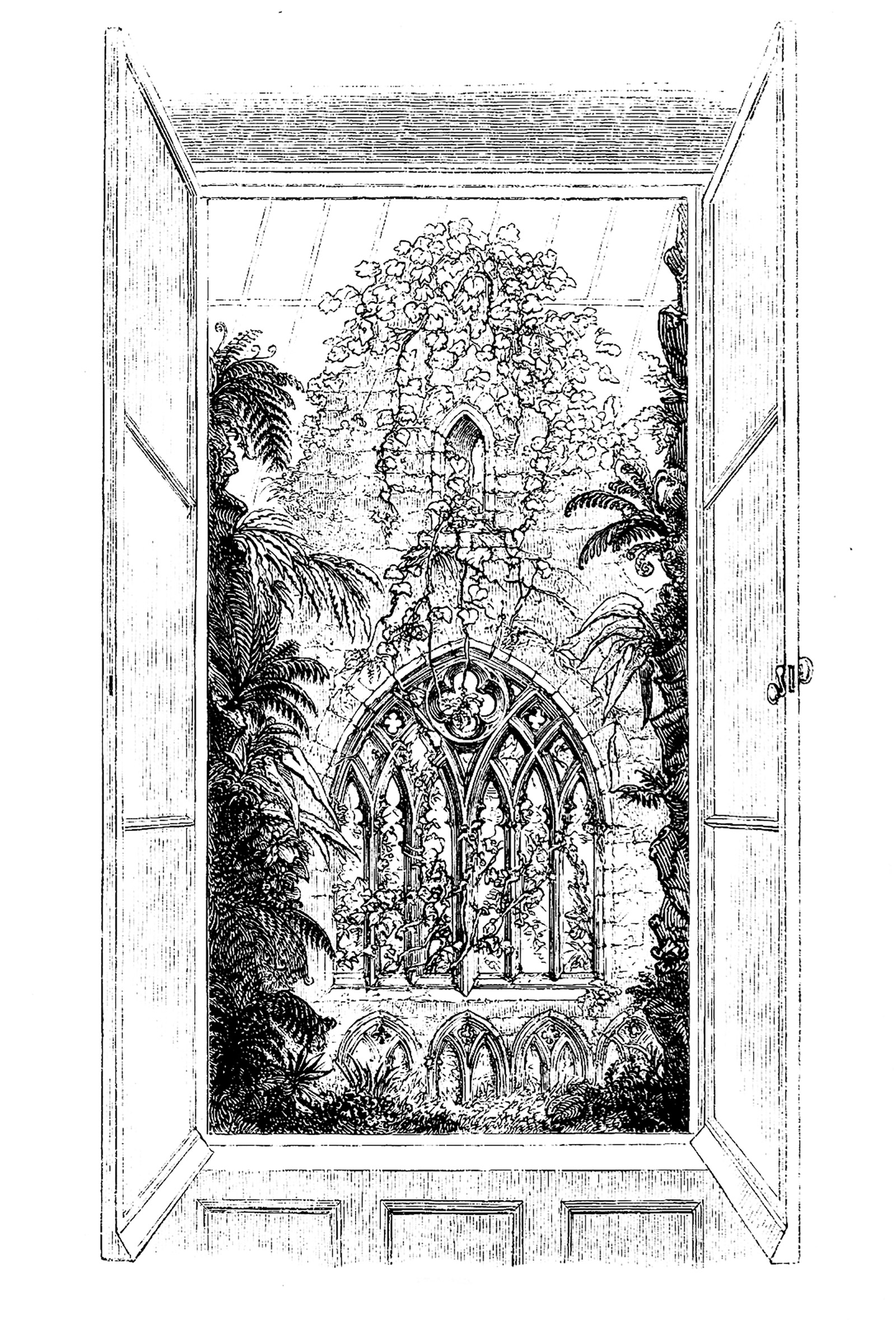An Enclosure
The Wardian case and the botanical ambition of British colonialism
Felix Kalmenson

The tools of everyday gardening have been so thoroughly recontextualized that without being a historian, one would be hard pressed to imagine the violence of the colonial enterprise that laid the foundations for contemporary botany and horticulture. One such object that has undergone a process of reconstitution from a strategic colonial technology to a benign middle-class accoutrement is the Wardian case. A glazed container closed (though not hermetically sealed) to a sufficient degree that a relatively undisturbed ecosystem can subsist within its confines, the Wardian case often allows for a closed hydrological cycle that remains independent of the outside environment. The case was the brainchild of Nathaniel Bagshaw Ward, a doctor and amateur botanist who stumbled on the innovation in the summer of 1829 when attempting to coax the metamorphosis of sphinx moths by burying the insect’s chrysalises in soil within an enclosed glass bottle. While the moths failed to materialize, Ward observed that blades of grass and a fern, Dryopteris filix-mas, began to sprout in the enclosed soil. Ward lived in London near the docklands, whose factories choked with smoke and soot all of his numerous attempts to establish the botanical specimens of his interest. As he later recounted, were it not for his previous diligent, though failed, attempts to grow ferns in his yard, he would have ignored the findings altogether. What he observed within the bottle was a closed hydrological cycle that did not require the introduction of any additional air or water. In other words, a balanced, independent ecosystem had been achieved, allowing the plants to thrive—which indeed they did until during one of his absences, the cap of the bottle finally rusted away and the closed system was breached, resulting in the death of the ferns.

Ward’s primary concern was the possibility of cultivation in an urban environment redolent with the toxic exhalations of the Industrial Revolution. Seizing upon his revelation, he experimented extensively and went on to create dozens of designs, ranging from tabletop cases to larger enclosures containing entire vistas that could be attached to the exterior of a window frame. Whereas the smaller Wardian cases were used by hobbyists for amateur scientific inquiry, the larger cases were showpieces, the most famous of which was a replica of the ruins of Tintern Abbey, a popular subject in the Victorian era. The Wardian case designed for the window thus acted as a living microcosm of romantic notions of the “natural,” while obscuring the industrial landscapes that made the case a necessity in the first place.